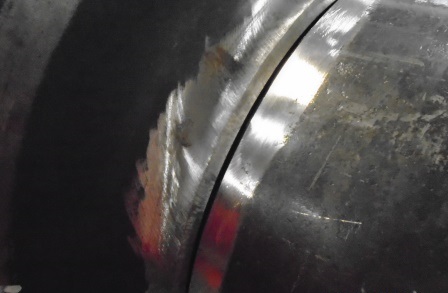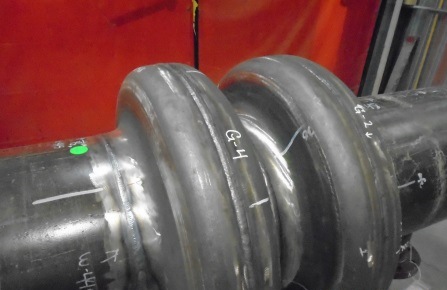An Extensive Checklist for Effective Welding Inspection Practices
In the world of welding, the honesty of frameworks is paramount, necessitating a rigorous method to examination practices. Checking out these essential components can yield insights that exceptionally impact welding operations.
Understanding Welding Specifications
Welding criteria play a crucial duty in making sure the high quality and safety of bonded structures and parts. These standards develop the requirements for products, treatments, screening, and evaluation, thus providing a framework for regular quality assurance in welding procedures. Various organizations, including the American Welding Culture (AWS), the International Company for Standardization (ISO), and the American Society of Mechanical Designers (ASME), have actually developed detailed criteria that govern different elements of welding.
Understanding welding standards is vital for specialists in the area, as adherence to these guidelines reduces the danger of flaws and failings in bonded joints. These standards cover particular demands for weld high quality, consisting of acceptable tolerances, the sort of welding methods to be utilized, and the credentials required for assessors and welders.

Pre-Welding Inspection Actions
Prior to any type of welding process begins, a thorough pre-welding examination is vital to recognize prospective concerns that may endanger the high quality of the weld. This first step works as a crucial structure for ensuring conformity with applicable welding codes and requirements.
The very first step in the pre-welding assessment is to validate the materials being utilized. This consists of checking for the appropriate type and quality of steels as defined in the project paperwork. Next off, it is crucial to examine the fit-up of the elements to make certain proper alignment and joint setup. Imbalance can bring about insufficient penetration and architectural weak points.
In addition, evaluating the tidiness of the surfaces is essential; impurities such as oil, paint, or corrosion can detrimentally influence the top quality of the weld. Following this, a comprehensive assessment of the welding equipment should be conducted, guaranteeing that it is calibrated and in good working problem.
Last but not least, assessing the credentials of the welding workers is imperative. Welders must have the essential accreditations and experience to carry out the specific welds needed for the task. By adhering to these pre-welding evaluation steps, the chance of issues and failures in the final weld can be significantly lowered.

In-Process Examination Methods
In-process examination techniques play a crucial duty in guaranteeing the stability and high quality of welds as they are being implemented. These techniques allow examiners to identify flaws or discrepancies from requirements in actual time, thus stopping pricey repairs and guaranteeing adherence to design requirements.
One key method includes aesthetic assessment, where inspectors evaluate the weld grain for harmony, infiltration, and correct account. This can be enhanced by the use gauges to measure weld measurements, ensuring compliance with fixed resistances. In addition, the application of non-destructive testing (NDT) techniques, such see here as ultrasonic testing or magnetic particle testing, throughout the welding procedure can disclose subsurface problems that might not be noticeable externally.
One more essential aspect is keeping an eye on welding specifications, including voltage, amperage, and travel speed. Uniformity in these criteria is essential for attaining optimal weld quality. Documenting these criteria throughout the welding operation provides a deducible document for future recommendation.
Training personnel in proper examination methods and making use of appropriate devices boosts the performance of in-process examinations. By incorporating these practices, companies can accomplish higher top quality welds, minimize rework, and ultimately make sure the safety and security and dependability of welded frameworks.
Post-Welding High Quality Checks
Adhering to the conclusion of welding operations, post-welding top quality checks are critical to verify that the welds meet all defined requirements and requirements. These checks are crucial for guaranteeing the honesty and longevity of the welded joints. The examination process commonly begins with an aesthetic assessment, evaluating for surface area problems such as splits, porosity, or incomplete combination.
Subsequently, non-destructive testing (NDT) approaches, such as ultrasonic screening, radiographic testing, or magnetic bit screening, may be utilized to detect interior imperfections that are not visible to the nude eye. Each method has its distinct advantages and is picked based upon the weld's location, material type, and the nature of the application.
Assessing the mechanical residential or commercial properties of the weld, including tensile stamina and ductility, can provide more guarantee of performance under operational problems. Generally, complete post-welding assessments are vital for maintaining adherence, performance, and safety and security to regulatory and industry criteria.
Documents and Reporting
How can reliable paperwork and reporting boost the welding assessment process? Precise documentation and detailed reporting are essential elements that make certain her response the integrity and top quality of welding operations. Welding Inspection Milwaukee. They work as an official record of assessment searchings for, assisting in liability and traceability in compliance with market criteria

A well-structured reporting system allows assessors to clearly connect any discrepancies, non-conformances, or areas requiring enhancement. This transparency promotes an atmosphere of continual renovation, as stakeholders can easily examine previous efficiency and carry out rehabilitative activities.
In addition, reliable documents consists of detailed documents such as welding treatment requirements (WPS), welder qualifications, and inspection lists. These aspects give a structure for assessing weld quality and adherence to established guidelines. In the event of disputes or quality issues, comprehensive documentation works as a reputable reference, lowering uncertainty and safeguarding all parties involved.
Last but not least, keeping organized records aids in training and licensing workers, making read review sure that industry ideal techniques are supported. Ultimately, thorough documents and reporting not only boost the welding examination procedure but additionally add to the overall safety and security and dependability of welded frameworks.

Conclusion
Finally, a thorough checklist for effective welding examination techniques is essential for guaranteeing quality and safety and security in bonded structures. Adherence to established welding requirements, careful pre-welding examinations, strenuous in-process evaluations, and extensive post-welding quality checks collectively add to the integrity of welded joints. Additionally, thorough documentation and reporting of assessment findings improve responsibility and help with constant enhancement. Carrying out these techniques will dramatically help in conformity with market requirements and eventually promote a culture of quality in welding operations.
Welding criteria play an essential duty in making sure the quality and safety and security of bonded structures and components. Numerous companies, including the American Welding Culture (AWS), the International Company for Standardization (ISO), and the American Society of Mechanical Designers (ASME), have created detailed standards that control different facets of welding.
Complying with the completion of welding operations, post-welding top quality checks are vital to verify that the welds meet all defined needs and standards - Welding Inspection Milwaukee.In verdict, an extensive list for effective welding examination methods is vital for ensuring high quality and safety in welded frameworks. Adherence to established welding criteria, careful pre-welding inspections, strenuous in-process assessments, and detailed post-welding quality checks jointly add to the integrity of bonded joints